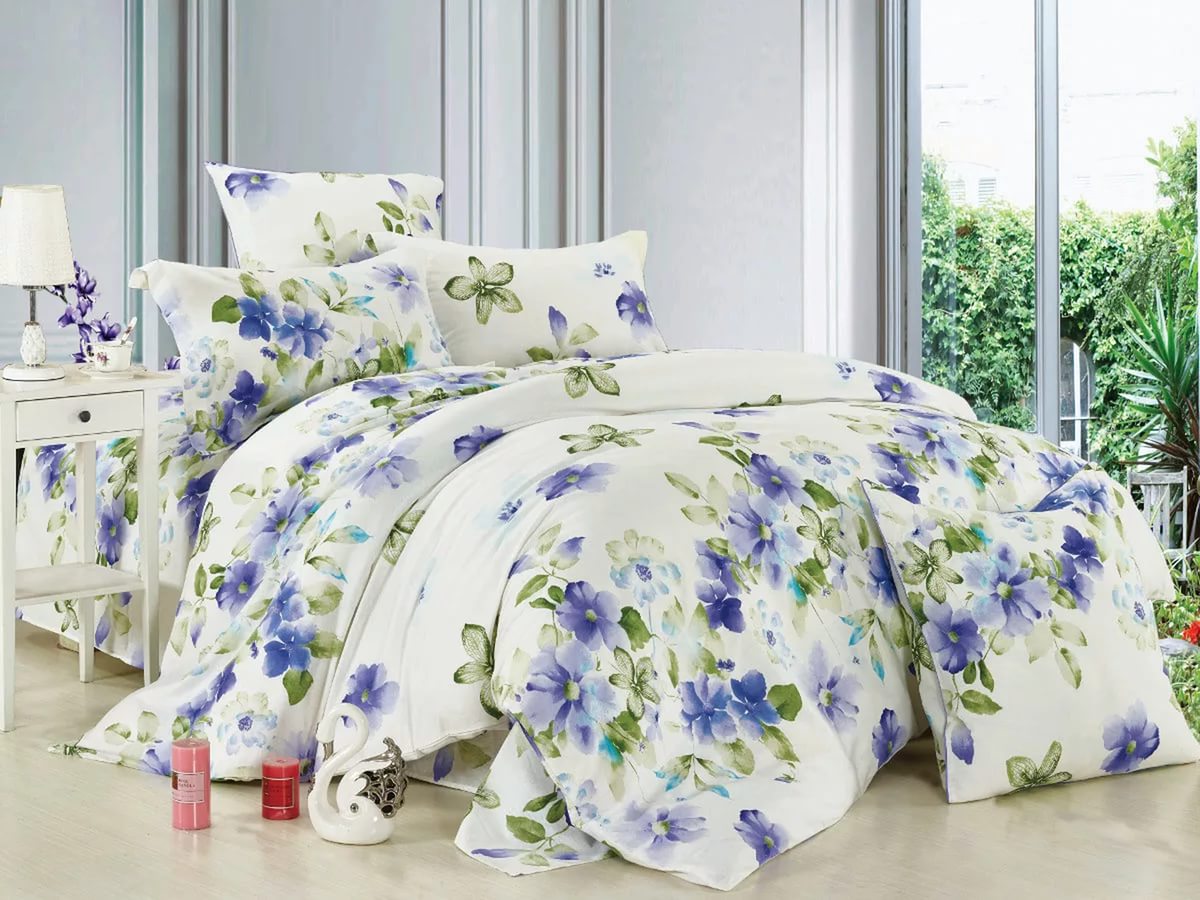
An article on how to sew high -quality bedding.
The content of the article
- What fabric is it better to sew bedding from?
- How to cut bedding in size correctly?
- Bedding seams
- How to sew a duvetail with your own hands: instructions, master class
- How to sew a sheet with your own hands?
- How to sew a pillowcase with a bed seam?
- How to sew a sheet on an elastic band?
- How to sew beautiful bedding with lace?
- How to sew children's bedding?
- How to sew bedding for a newborn?
- How to sew beautiful bedding: double and 1/5 sleeping kit?
- How to sew a beautiful euro set of bedding?
- Is it profitable to sew bedding for sale?
- Video: How do they sew bedding on an industrial scale?
Thoughts and emotions that arise in a person before bedtime are very deeply fixed in memory. And it means that the quality of sleep largely depends on how aesthetic and pleasant to the touch the bedding will largely depend.
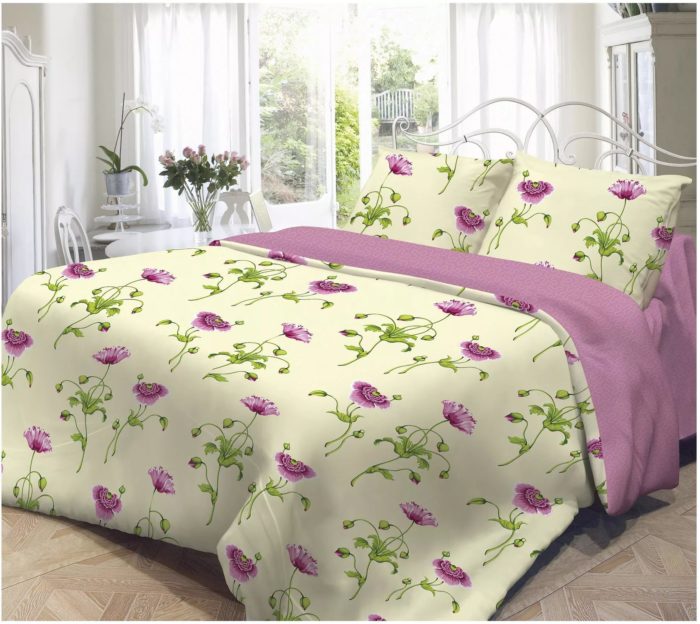
How to sew bedding?
What fabric is it better to sew bedding from?
The most popular fabric for sewing bedding is cotton. It is natural and inexpensive. In the minds of many, a stereotype has developed that calico, satin and tick are also cotton. But it turns out that these names indicate only a method of weaving threads. And today the calico can be made of anything, including from a pure polyester, so before buying you need to pay attention to the composition of the fabric.

Cotton fabric bedding
Fabrics from flax are natural and durable. Perhaps their only minus is a high price. Often, snow -white bedding is made from this fabric for fashionable hotels. If you set the goal of creating an expensive interior without a synthetic shine and tasteless gilding, then it is Lenon that will most likely be chosen as textiles.
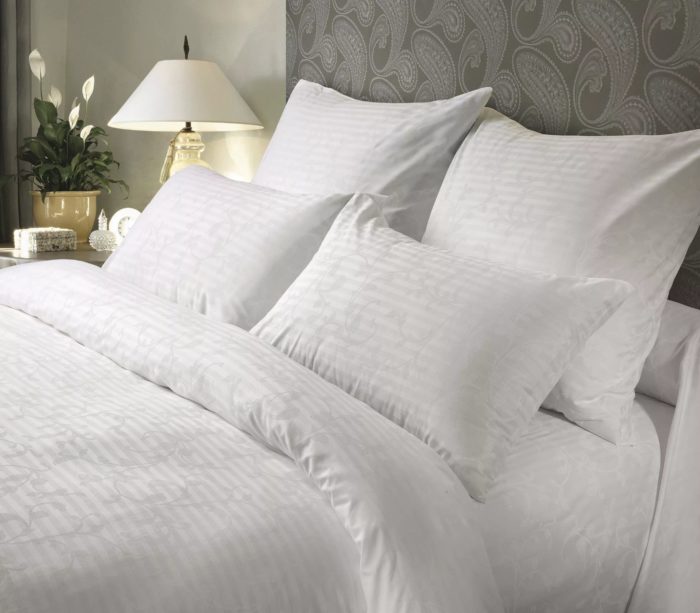
Snow -white bedding
By the way, in the United States, plain linen of linen is very popular, without flowers and other jewelry, so if you want to create an interior in the American style, then it will be just such textiles.

White bed in the interior
Mixed fabrics - are created at once from several materials, most often it is a mixture of natural fabric and polyester. Thanks to synthetic fibers, Matter rummages less and becomes more wear -resistant, but such a fabric is electrified, passes the air worse and absorbs moisture worse.
Now the finished bedding sets with 3D seals or drawings created specifically for them are very popular. There are such fabrics on free sale, which means that a beautiful bed with a pattern will be sewn with your own hands.
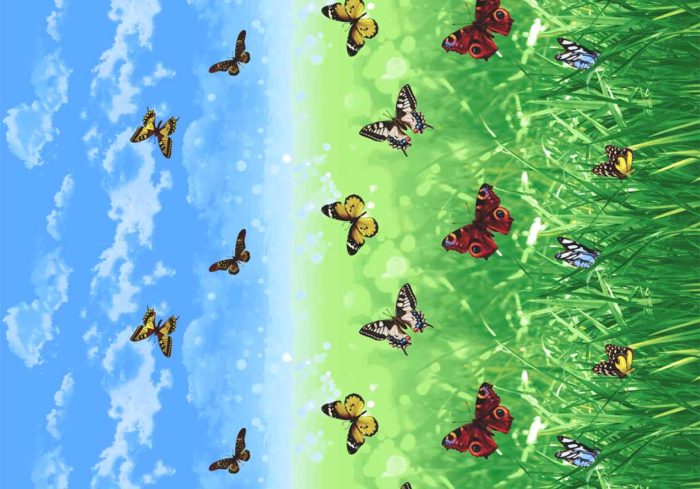
Bed tissue with butterflies
The drawing on the fabric for bedding can be oriented according to the shared or transverse thread. Such a fabric as in the photo above has a standard width, in this case 220 cm, and it needs to be typed “in width”. And from such fabric, both in the photo below you can sew both in the shared and transverse thread.
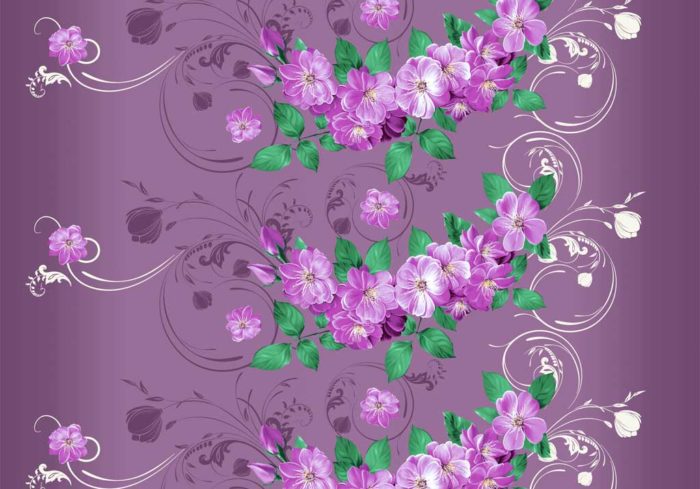
Bed fabric with a pattern "Flowering Sakura"
As a rule, a bed for bedding is sold in rolls with a width of 150 or 220 cm, and if you need to sew a set of bedding of non -standard sizes, then it will be easiest to work with a fabric with a small or abstract pattern, for example, such as in the photo below.

A bed with an abstract pattern
How to cut bedding in size correctly?
Sewing beautiful bedding begins with proper measurement. It is better to measure bedding and make calculations yourself, since the sizes of mattresses, blankets and pillows are non -standard. Manufacturers of finished sets sew their different sizes to learn more about the standard size of bed linen and their possible variations read this article. And here we will tell you how to open bedding yourself.

Buy - good, but sewing is better!
Measure the width and length of the pillows, blankets and mattress. In order not to forget anything, take a leaflet, draw rectangles symbolizing them, and then write down the results of your measurements on it. The dimensions of pillowcases, sheets and duvetails we will calculate for each item separately.
Duvet cover
- We multiply the width of the blanket by 2, because the duvetel will be on it on both sides
- Then to the length and width of the blanket you need to add 5-7 cm of allowances to the seams
- It often happens that a new bed sits perfectly only until the first washing, and then sits down and looks sloppy. Therefore, we will also add an allowance for fabric shrinkage of 4% of its width and length. Such an allowance for shrinkage needs to be done only for natural cotton, because synthetics does not sit down
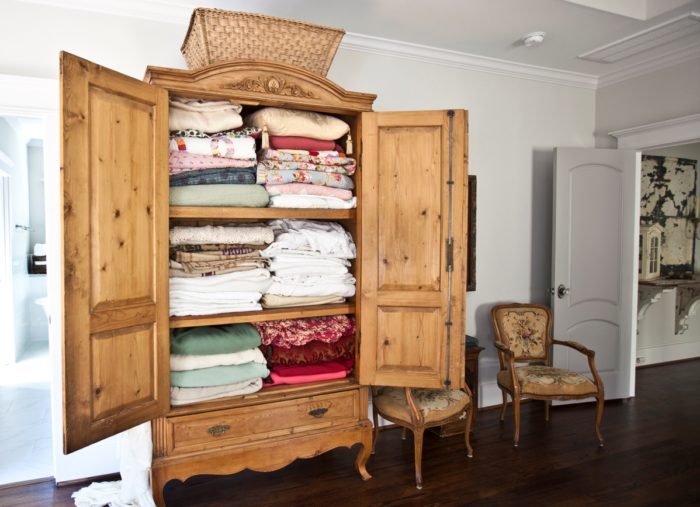
DIY linen will be original and non -standard
Sheet
- To the length and width of the sheet, we add the doubled height of the mattress (you need to do only if the mattress rises above the bed)
- Add the allowance to seams 3 cm in length and width
- Add the allowance to the free edge (10 cm in length and 30-40 cm in width)
- And the last to add a allowance for fabric shrinkage, 4% of the length and width
Pillowcase
- If the pillow has the shape of a square, multiply the length of the pillow by 2, since the pillowcase will be on the pillow on both sides
- Add to the resulting length 25-30 cm on the gateway, which will hold the pillow
- Add to the width and length of 5-7 cm per seam
- Add another 3 cm to the length and width so that the pillowcase is free
On fabrics, all these details can be oriented as shown in the picture below. Please note that the dimensions are better to count on your own.
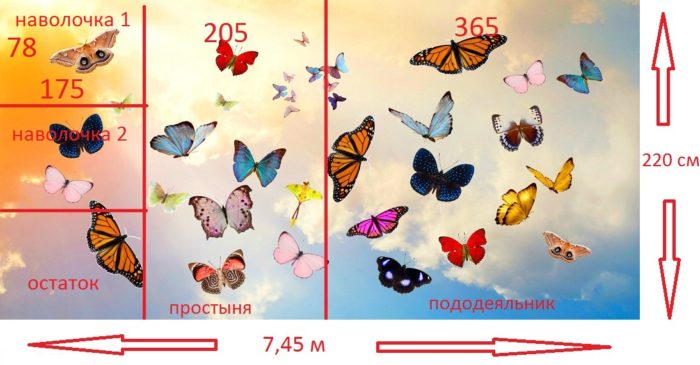
An example of how you can cut out bedding
A 1.5 meter -wide fabric is suitable only for sewing children's and single -spaced bedding. For a one and a half or larger bed, fabric 2.2 meters wide is suitable. Rolls with matter for bedding are usually produced just such a width.
Bedding seams
For sewing duvetings and pillowcases, a bed seam is used, which is sometimes also called vapillary. This seam turns out to be dense to the touch and very durable, so bedding can be safely washed at any mode of washing machine, nothing will happen to it.
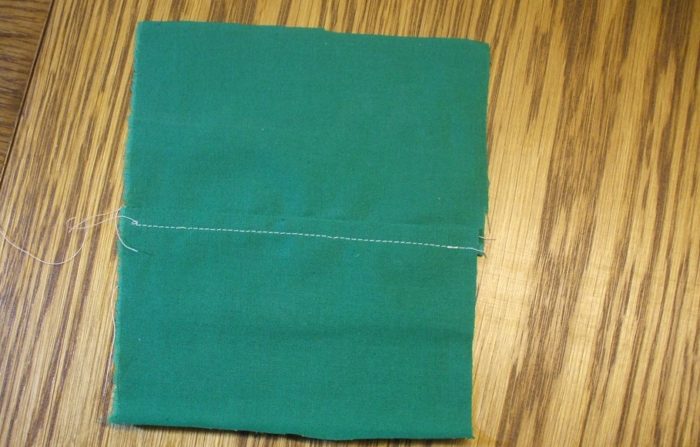
Zaping seam
It looks like a linen seam from the front side, and two white lines will be visible from the wrong side. The same seams are used when jeans are sewn. And the technology for creating a quarrel suture is as follows:
- We fold two pieces of fabric "face to each other"
- We move the upper fabric to the side of 5-7 mm, so that a strip of lower fabric is visible
- We wrap this strip and stir it up
- We unfold the details so that they lay to us the wrong side and the seam is in the middle
- We bend the seam to the left and sew it to the canvas
- The bed seam is ready!
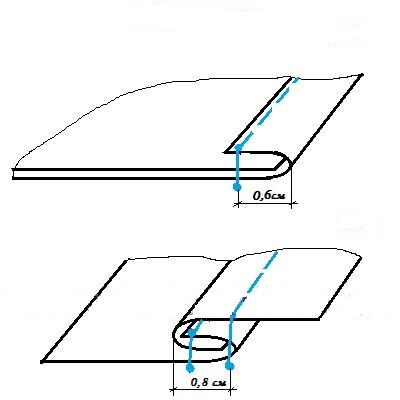
Bed seam
Ideally, the allowances for the seams of the upper and lower parts should be different. For the upper part, this allowance should be equal to the width of the seam (5-7 mm), and for the lower allowance should be like two widths of the seam and another 2-3 mm (total 12-20 mm). But when it comes to bedding, an error of 1-2 cm is invisible, and the details that are sewn by a bed seam can be cut the same size.
Video: a quarrel seam
For sewing a sheet, as well as free edges of the pillowcases and a duvetail, a seam is used to beamed with a closed cut.
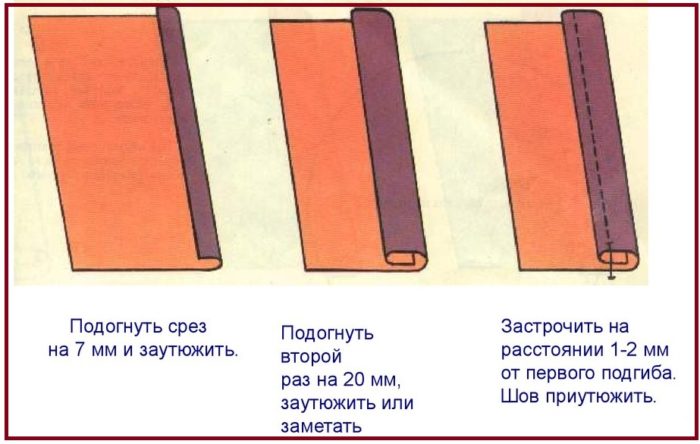
Seam in a closed cut
How to sew a duvetail with your own hands: instructions, master class
It will be a simple duvetel with lightning in the side seam to insert a blanket
1. We take a piece of fabric for a duvetail, in our case, its size is 2.2 meters wide and 4 meters long
2. We begin to sew a duvetel with a slightly simplified version of the linen seam. This seam is inferior in strength to the quarry of the seam, which we considered above, but also quite strong

Simplified bed seam
3. Fold the fabric for the duvetail in half, the front side and, starting from the corner, begin to scribble a long side seam
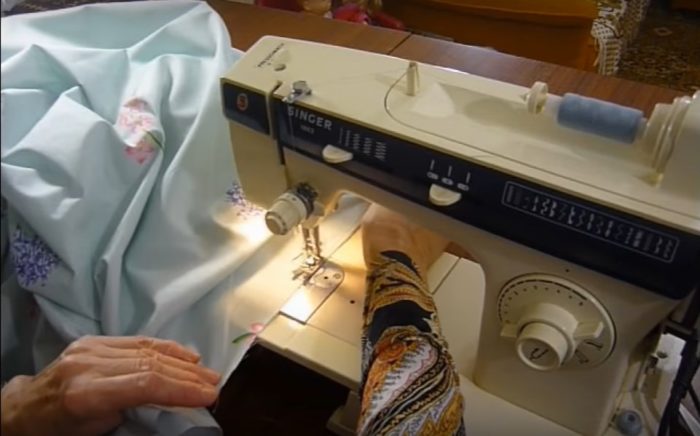
We sew a duvetel with our own hands: we sew the side seam
At the beginning and end of each line, we definitely make “fixes”, passing several times a machine back and forth along the same place
4. Cut the sticking threads
5. After that, we turn the future duvetel inside out and make another seam, so that our first seam and the edges of the fabric are inside
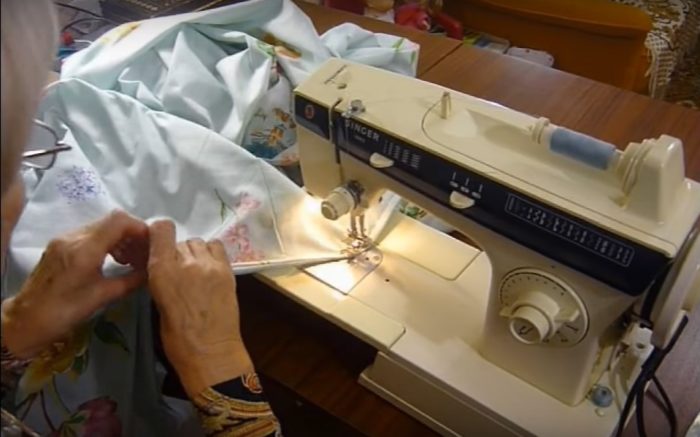
We make the second line of the double seam
6. We determine the place where the zipper should be and fix it with hairpins, as in the photo. The front part of the lightning should come into contact with the front part of the lightning. And to us at the time of sewing, lightning should lie in the wrong side.

We fasten the hidden zipper with hairpins
7. We sew the zipper with a lowercase seam first to one, and then to the second side of the future slot.
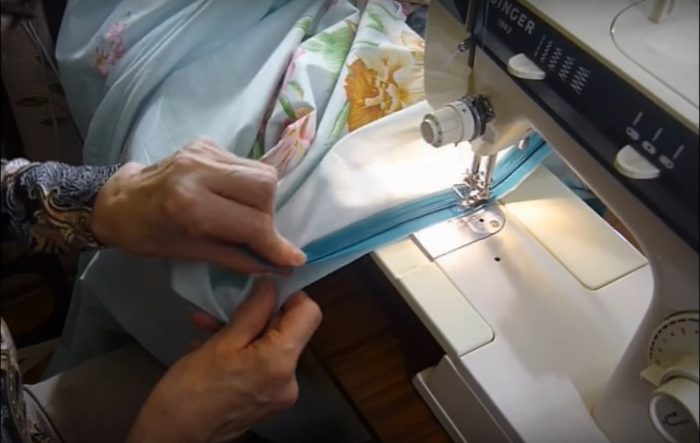
Sew the zipper to the duvetail
Be sure to unfasten the zipper a little before sewing it, otherwise it will be impossible to turn out the duvetail out
8. Touching the ends of the duvetel with an ordinary lowercase seam, a double seam is not needed here, since there is a factory edge.
9. The duvetel is ready.

Ready -made duvetel with lightning
Video: How to sew a duvetail (part 1)?
Video: How to sew a duvetail (part 2)?
How to sew a sheet with your own hands?
The sheet on both sides must be chopped into the hem in the hem, for which the fabric is wrapped twice and then stitched. In our case, nothing needs to be done from two sides, since we have a factory edge there.
How to sew a pillowcase with a bed seam?
1. Our pillowcase size is 50 by 70 cm. We take a piece of fabric intended for it, which has a width of 73 cm and a length of 143 cm (with an allowance for seams 3 cm)
2. We make a seam into the hem on one side of the fabric, the length of which is 73 cm. This is necessary to chop the edge of the pillowcase valve
3. bend the part designed to hold the pillow, and then fold the fabric in half, as shown in the photo below
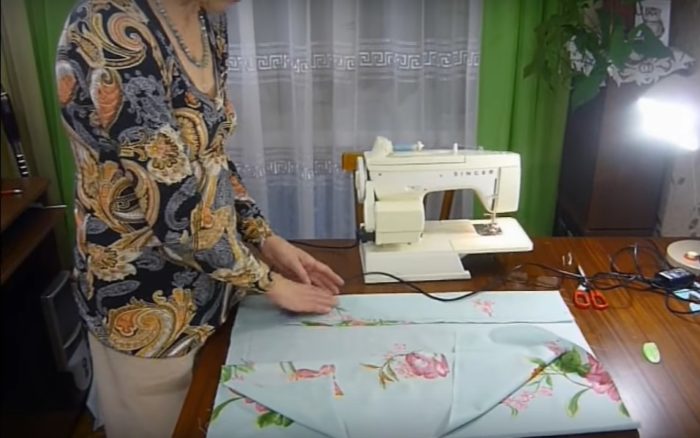
We sew a pillowcase with our own hands
Important: the width of the pillowcase valve can be from 15 to 30 cm, and the more it will be, the more reliable it will hold the pillow
4. Sew the side edges of the pillowcase with a double seam: first we combine the details so that they lay face to us, and make a line near the edge itself, then turn the pillowcase, straighten the corners with scissors or other thin objects, and make another line

How to sew a pillowcase: we make a second line of bed seam
5. The pillowcase is ready
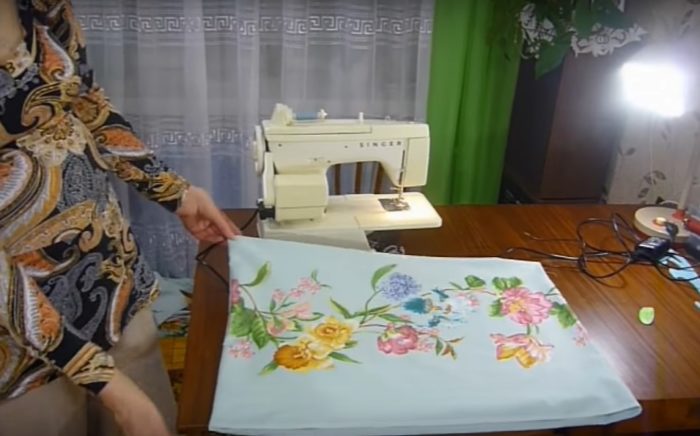
Ready pillowcase
Video: How to sew a pillowcase?
How to sew a sheet on an elastic band?
The elastic sheet is convenient in that it never moves away and does not stop, but sewing it is a little more difficult. The pattern will be approximately like this:

Gum sheet pattern
The difficulty is also that the fabric 2.2 meters wide is enough only for one and a half bed with a width of no more than 1.5 meters. If the bed is wider, then the fabric must be sought more width. And the technology of sewing sheets on the elastic band is as follows:
- We cut the fabric as in the diagram. Do not forget to leave allowances for seams 1 cm (they are indicated green)
- Sew the angles of the sheet as a bed seam
- We process the edge of the sheet: we make a wide seam in the bend (about 1.5 cm wide).
- We set an elastic band into the seam, which was formed along the edge of the sheet. The elastic band is suitable for the usual linen, 0.7 cm thick. The length of the elastic band for the sheet is taken by a meter less than the perimeter of the mattress
Video: How to sew a children's sheet on an elastic band?
How to sew beautiful bedding with lace?
With sewing lace, there are usually no problems. Lace strips do not scatter, and it is enough to fix them with an ordinary lowercase seam.

We sew a bed with lace
With the help of lace, you can decorate not only the edges, but also the middle of the duvetail, having bought a piece of guipure for this.

Bed with lace
How to sew children's bedding?
Children's bedding is sewn using the same technology as adult laundry: be sure to use linen seams, a sheet can be made on an elastic band, and a duvetel with a secret lightning.
Interesting: on sale there are special lightning for bedding without "dogs"

Bed linen for a boy
Baby bedding with drawings should like the kids.
How to sew bedding for a newborn?
For the baby, it is better to choose a soft villous tissue, for example a flannel. It is soft and seems warm to the touch, which means there will be less chance that the child will cry when he is put in a crib. A bedding set for a newborn may include such items:
- glass sheet
- duvet cover
- pillowcase
The pillowcase, like the pillow, is not needed by the newborn, but the child will grow quickly and it will come in handy later.

Gum sheet in children's playpen
Baby bedding can be supplemented with sides of the same fabric, how to sew the sides is dedicated this article.
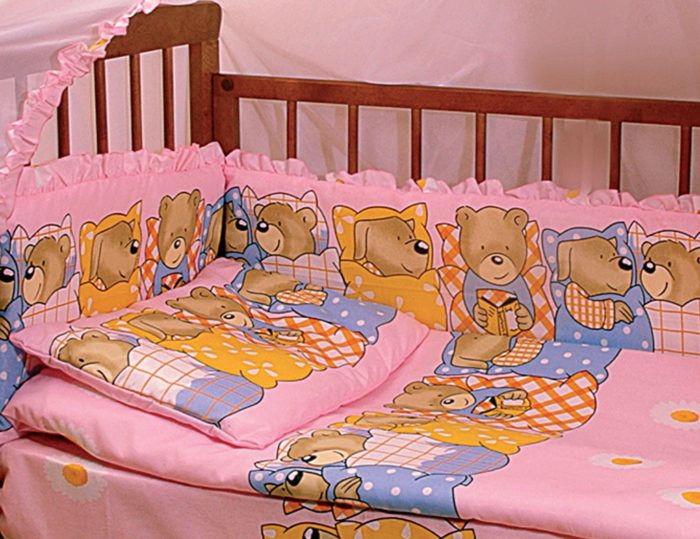
How to sew bedding for a newborn
How to sew beautiful bedding: double and 1/5 sleeping kit?
Before sewing bedding, it is better to remove the measurements, because mattresses, and even more so the blankets of everyone are different. But in order to better navigate, we give two schemes on which you can see how to place a sheet, a duvetail and pillowcases on the fabric.

Patterns of one and a half and double bedding
Sometimes, to sew beautiful bedding, fabrics with different patterns.
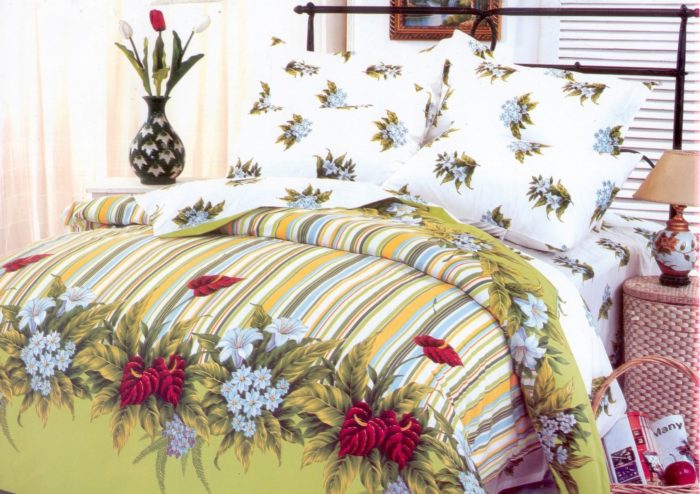
Beautiful bedding made of fabric with different patterns
Thanks to the juicy color, bedding can look beautiful and concise, on which a minimum of drawings.
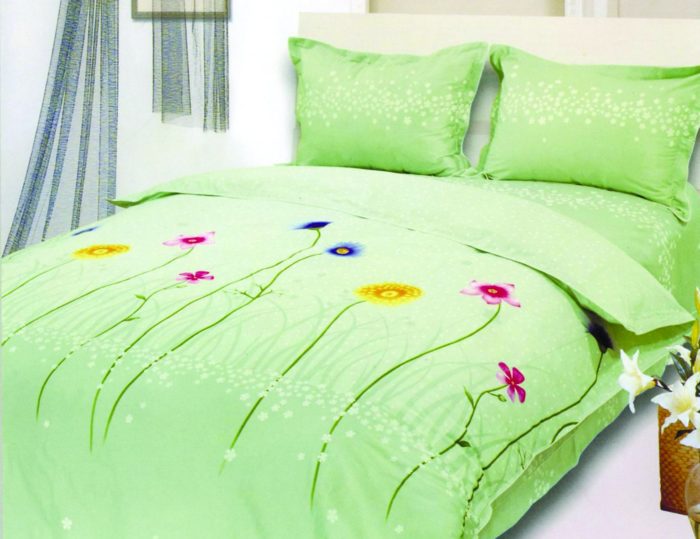
Laconic double
The fabric in a flower seems too simple, but it may look very solemn.
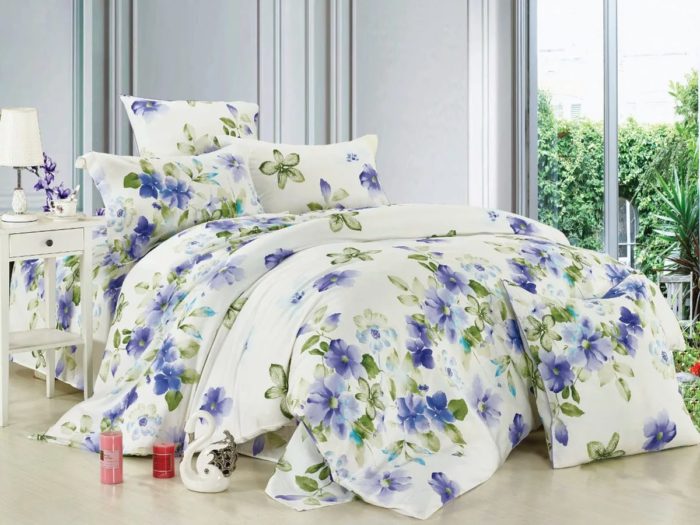
Bed linen in a flower
How to sew a beautiful euro set of bedding?
The euro sets of bed linen provide a wide sheet, so it is convenient to sew them from fabric with a width of at least 260 cm. The pillows in such sets have the shape of a rectangle. Crysticks can be sewn given the size of the blanket, according to the scheme of the article given at the beginning.

Euro bedding set
The fabric with drawings that resemble the paintings looks wonderful, but it is easier to sew from fabric with a small pattern, and such a bed looks sometimes no worse.

How to sew a Euro linen set
Sometimes a combination of plain fabric and fabric with a pattern looks beautiful.

We sew a bed of two types of fabric
Is it profitable to sew bedding for sale?
Will it turn out to earn on sewing bedding is a controversial question, because it all depends on the cost of the material. And to compete with the cheapest bedding, from the calico, which in density resembles gauze, is difficult. But we can confidently say that if you sew for yourself, you can save, and get good quality bedding for little money.
